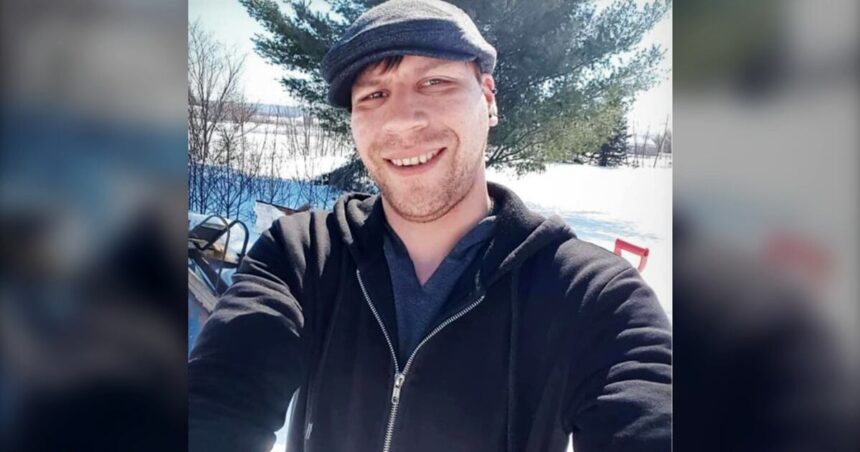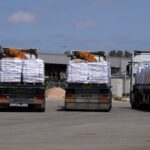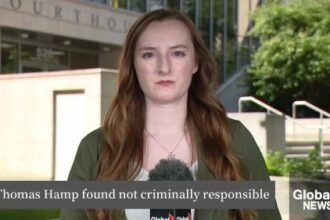The crisp autumn air brings a particular heaviness to the small community of Wikwemikong on Manitoulin Island, where the search for Jake Corbiere has now stretched beyond its second painful anniversary. The 33-year-old Indigenous man vanished without a trace on September 15, 2021—leaving behind a devastated family, unanswered questions, and a community unwilling to give up hope despite the passage of time.
“Every morning I wake up thinking today might be the day we find answers,” says Melissa Corbiere, Jake’s sister, her voice steady despite the emotional weight carried in her words. “Two years feels like both an eternity and somehow just yesterday.”
Jake was last seen in the early evening hours near Kaboni Road in Wikwemikong First Nation. Described by family as standing 5’10” with a medium build, black hair, and brown eyes, he was wearing a black T-shirt and blue jeans when he disappeared. What should have been a routine evening walk turned into one of the region’s most perplexing missing person cases.
The Wikwemikong Tribal Police Service has partnered with the Ontario Provincial Police throughout the investigation, deploying resources that have included ground search teams, K-9 units, drones, and helicopters. Despite extensive search efforts covering nearly 400 square kilometers of rugged terrain, dense woodland, and shoreline, investigators have recovered remarkably little evidence pointing to Jake’s whereabouts.
“This is not a case that’s sitting on a shelf collecting dust,” emphasizes Detective Sergeant Mark Collins of the OPP’s Criminal Investigation Branch. “We continue to follow up on every tip, every potential lead. The challenge has been the lack of physical evidence, but that doesn’t mean we’re not making progress.”
The disappearance has had profound effects beyond the immediate family. Throughout Manitoulin Island and surrounding First Nations communities, Jake’s case has highlighted ongoing concerns about missing Indigenous people across Canadian territories. Community organizers have held numerous awareness walks, prayer circles, and fundraising events to ensure Jake’s story remains in public consciousness.
Chief Rachel Manitowabi of Wikwemikong First Nation notes the case has created stronger connections between law enforcement and Indigenous communities, though born from tragic circumstances. “There’s been a collaborative effort I haven’t seen before,” she explains. “But we shouldn’t need a missing person to build these bridges of communication and trust.”
Financial challenges have complicated the ongoing search efforts. While the initial investigation received substantial public funding, the family has increasingly relied on grassroots fundraising to finance continued search operations, including bringing in specialized search teams and cadaver dogs from southern Ontario. A GoFundMe campaign established last year has raised just over $23,000 to date, helping to offset these considerable expenses.
Psychologists familiar with long-term missing person cases point to the particular difficulty of what experts call “ambiguous loss”—when there is no closure, no body to bury, no definitive answers.
“The family exists in a state of suspended grief,” explains Dr. Eleanor Thompson, a clinical psychologist specializing in trauma. “They can’t fully mourn because there’s always that thread of hope, however tenuous it might become with time. It’s one of the most challenging psychological burdens a family can bear.”
Despite the emotional toll, the Corbiere family refuses to surrender to despair. They’ve established a dedicated tip line, distribute flyers throughout Northern Ontario, and maintain an active social media presence seeking information about Jake’s whereabouts. Their determination has inspired similar efforts for other missing persons across the province.
“Someone knows something,” Melissa Corbiere insists. “Whether it’s a small detail they thought unimportant or something more significant they’ve been afraid to share—we need that information. We need to bring Jake home.”
As another harsh northern winter approaches, bringing with it conditions that will once again hamper search efforts until spring, the question hanging over this tight-knit community remains as urgent as it was twenty-five months ago: will the third year of searching finally bring the answers the Corbiere family so desperately needs?










